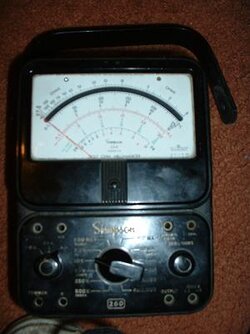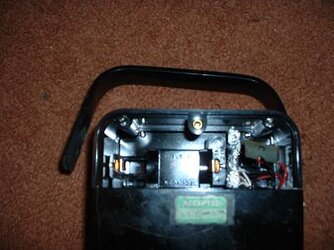- Joined
- Jan 17, 2004
- Location
- indianapolis
Hi everyone. I found this thing in a toolbox outside. My dad said it was my grandpa's. My grandpa was an electrician. I'd ask him about it but he's not living anymore. I pretty sure it's a multimeter. It says "milliameter" on it. So is it like a more advacned multimeter or what? Here's a couple pics the first one is the front and the second one is the back. It also has cables that plug in the little holes. Thanks.
Attachments
Last edited:

